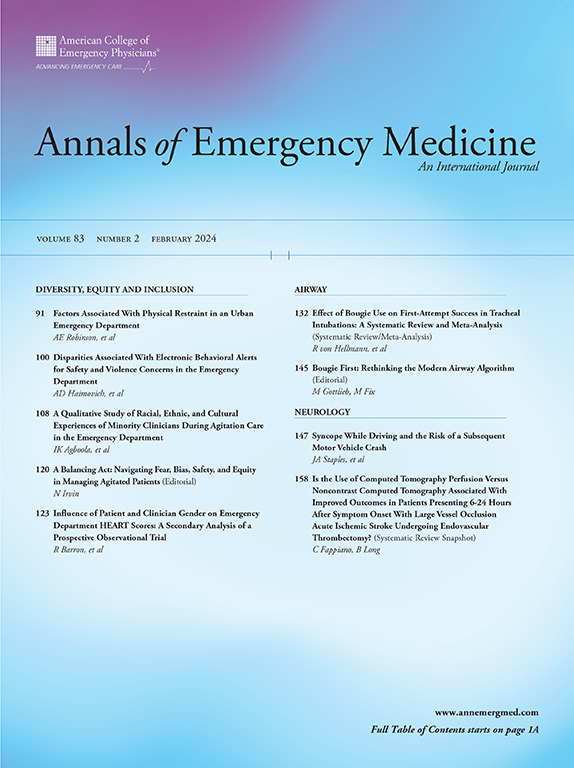Evaluation, Stabilization, and Transfer of Pregnant and Postpartum Patients Presenting to Emergency Departments Without Inpatient Obstetric Services.
IF 5
1区 医学
Q1 EMERGENCY MEDICINE
引用次数: 0
Abstract
More than 50% of rural critical access hospitals in the United States no longer provide inpatient obstetric services. As more hospitals close their hospital-based obstetric services, emergency physicians must still be ready to care for pregnant patients who present emergently for care. Ideally, this will include immediate medical screening examination, stabilization and transfer to a hospital with obstetric services. In other circumstances, it will result in the need to provide basic obstetric emergency care for conditions such as unanticipated delivery, postpartum hemorrhage, eclamptic seizure, and neonatal resuscitation. Emergency physicians working in hospitals without inpatient obstetric services need to have knowledge of both the closest obstetric unit they can transfer a full-term patient for obstetric triage and delivery, and where they can transfer a preterm patient at any gestational age. Level I Obstetrical Units (low-risk units) can typically accept patients with more than 37 weeks gestation. Regional maternal centers (Level III/Level IV) can typically accept any gestational age. It is critical for emergency physicians working in facilities without inpatient obstetrics to be familiar with both resources in their catchment area (eg, nearby low-risk and regional high-risk centers). This article examines the emergency physician's role in evaluation, stabilization, and transfer of pregnant and postpartum patients seeking emergency medical care at facilities without inpatient obstetric services.评估、稳定和转移孕妇和产后患者到急诊科没有住院产科服务。
美国超过50%的农村危重医院不再提供住院产科服务。随着越来越多的医院关闭以医院为基础的产科服务,急诊医生仍然必须准备好照顾紧急前来就诊的孕妇。理想情况下,这将包括立即进行医疗检查、稳定病情和转到提供产科服务的医院。在其他情况下,它将导致需要为意外分娩、产后出血、子痫发作和新生儿复苏等情况提供基本的产科急诊护理。在没有住院产科服务的医院工作的急诊医生需要了解最近的产科单位,他们可以将足月病人转到哪里进行产科分诊和分娩,以及他们可以将任何胎龄的早产儿病人转到哪里。一级产科病房(低风险病房)通常可以接受妊娠超过37周的患者。区域产妇中心(三级/四级)通常可以接受任何胎龄。对于在没有住院产科的设施中工作的急诊医生来说,熟悉其集水区(例如,附近的低风险和区域高风险中心)的这两种资源是至关重要的。本文探讨了急诊医生在评估、稳定和转移孕妇和产后患者在没有住院产科服务的设施寻求紧急医疗护理中的作用。
本文章由计算机程序翻译,如有差异,请以英文原文为准。
求助全文
约1分钟内获得全文
求助全文
来源期刊

Annals of emergency medicine
医学-急救医学
CiteScore
8.30
自引率
4.80%
发文量
819
审稿时长
20 days
期刊介绍:
Annals of Emergency Medicine, the official journal of the American College of Emergency Physicians, is an international, peer-reviewed journal dedicated to improving the quality of care by publishing the highest quality science for emergency medicine and related medical specialties. Annals publishes original research, clinical reports, opinion, and educational information related to the practice, teaching, and research of emergency medicine. In addition to general emergency medicine topics, Annals regularly publishes articles on out-of-hospital emergency medical services, pediatric emergency medicine, injury and disease prevention, health policy and ethics, disaster management, toxicology, and related topics.
 求助内容:
求助内容: 应助结果提醒方式:
应助结果提醒方式:


